THE photo captures a moment of high drama.
A gravel road in the outback. A banged-up car with its doors ajar. Three men lie with their faces in the dirt. Two are having their hands tied behind their backs by police. A third officer watches on. Guns lie on the ground.
To the far left, a young woman stands next to the car, it looks as if she is speaking to someone just out of frame.
This was the scene on the Birdsville Track on September 14, 1970 that greeted News Corp photographer Ray Titus, after he ran up a hill as armed police ambushed three escaped convicts with a terrified girl stashed in their car.
As he came up the rise, he snapped off this image. He continued photographing as police arrested the fugitives after a shoot-out.
It was the dramatic end to a 26-hour manhunt for three desperate escaped convicts who had kidnapped the girl and were on their way to Darwin.
The woman in the photo was Monica Schiller, then 20.
In her first interview about the ordeal — 36 years after the event, with News Corp crime writer Kate Kyriacou — she recounted:
“There was a lot of shooting. I stayed in the back of the car as low to the floor as I could possibly get.
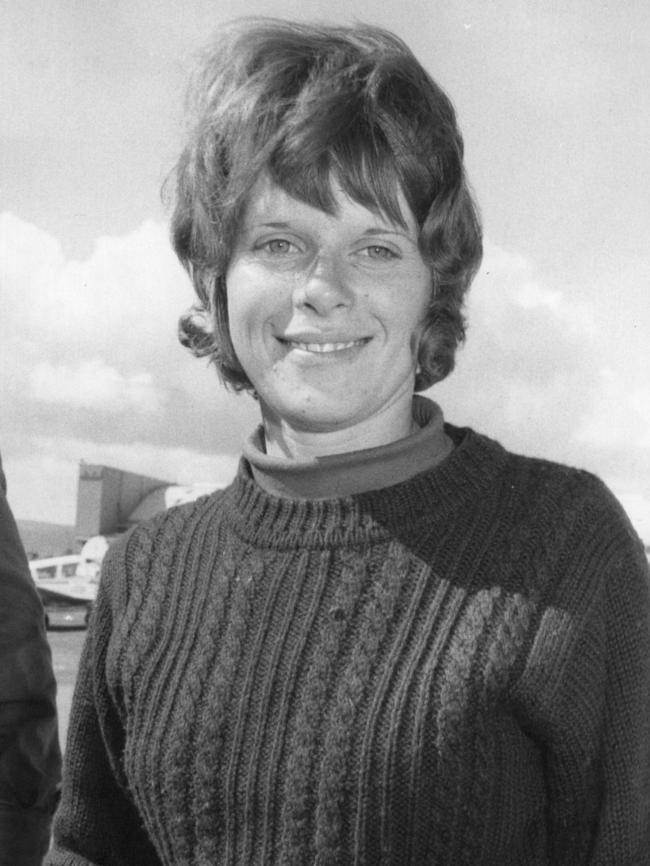
“That was a bit of a worry, not knowing whether you were going to come out alive or not. They only had to turn the gun on me and I would have been history.”
“They” were prison escapees Murray Andrew Brooks, 22, Raymond Clifford Gunning, 23, and Terrence Haley, 22.
The trio had been serving time for burglary at Cadell prison farm near the Murray River in South Australia and were due for release within months when they made their wild bid for freedom.
After making their break, the trio made a beeline for Monica’s family’s isolated homestead.
Monica had just returned from a walk through the paddocks with her boyfriend Graham Smith.
They were having a drink of water and chatting in the kitchen.
“Back then there was a lounge chair in the kitchen and I think mum and dad were sitting on it,’’ Monica said.
“All of a sudden the door burst open and we were confronted by these three men with wooden sticks. They tied mum and dad up in my bedroom and Graham they tied to a bed in the front room which used to be a sleepout. I was told to pack some gear as they were going to go for a drive and they were going to take me with them. I was absolutely dumbfounded. I just couldn’t fight them off on my own.
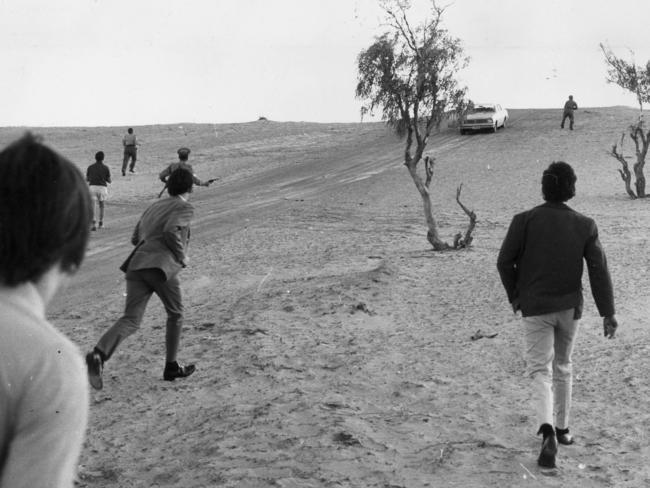
``We were just so shocked. When you think back, you think maybe we should have tried to retaliate but they had these wooden sticks.’’
While Monica packed, the men ransacked the house, taking her father’s guns, cash, a change of clothing and food. ``In those days my father never locked his guns away — you never needed to,’’ she said.
``In those days we thought we were safe.
``I had to go to the toilet at one stage so one of them stood outside the door and made sure I didn’t escape.’’ Monica was bundled into the back of her father’s Holden sedan and all four drove off. A frantic Mr Smith eventually managed to free himself and untied Monica’s parents.
``We heard them say they were taking Monica with them but we had a damn good look around first just to make sure,’’ he recalled.
``They’d taken the keys to the rest of the vehicles, so Ardy and I took off on foot through the scrub to the neighbours’. One of the neighbours drove Ardy down to the local telephone exchange and we called the police.’’
As the car headed away, Monica clearly remembered passing a family friend who spotted her father’s car and waved.
``I went to wave and, of course, I got shoved down on the floor of the car in a big hurry,’’ she said. ``Then every time they stopped to get petrol or to get something to eat, I got shoved down on to the floor again.’’
Brooks, Gunning and Haley paid little attention to Monica and began discussing plans to drive to Darwin and board a ship to Malaysia.
But first they headed to Adelaide and stopped in suburban Semaphore for a lunch of ham and tomato sandwiches and Coke.
Monica said she was constantly flanked by her kidnappers and was too frightened to contemplate escaping.
``They had firearms and I never was very good at running anyway,’’ she said. ``Put yourself in my position — there were three of them and only one of me.’’
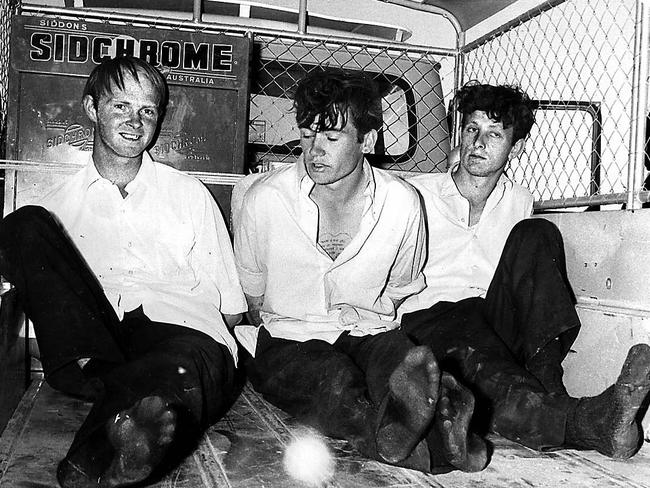
From Semaphore, the men took turns driving north, past Port Augusta to Quorn. In Hawker, the kidnappers dumped the car and stole another.
They had been listening to radio bulletins throughout the night and laughed at broadcasts saying they were still in their prison uniforms.
Mr Smith believes it was at this point that authorities discovered the abandoned car and realised they were headed towards the Birdsville Track.
`The police probably alerted everyone up that way to get out,’’ he said.
``I think that’s why nobody was home at the homesteads they raided.’’
Monica remembered she and her kidnappers became incredibly thirsty and stopped to drink from a creek.
She said the water tasted awful.
``I remember we stopped at a couple of stations along the way.’’
``The people at one must have kept all their tinned food in a shed away from the house and I remember taking some cans of food and packing them into the car.
``I know we must have gone into the station homestead because they were looking through photo albums and things — I have no idea why.
``It was there that we first saw the search planes. It was a very big relief to know they had some idea of where we were and that help must be on the way.’’
Desperate to elude police, the men continued along the potholed and corrugated Birdsville Track.
At one point, the car became bogged in soft sand — but they eventually pressed on.
After what seemed like hours, the fugitives drove over a rise — and into an ambush from police who had landed ahead of them at Birdsville and then driven back towards them.
That’s when the shooting began.
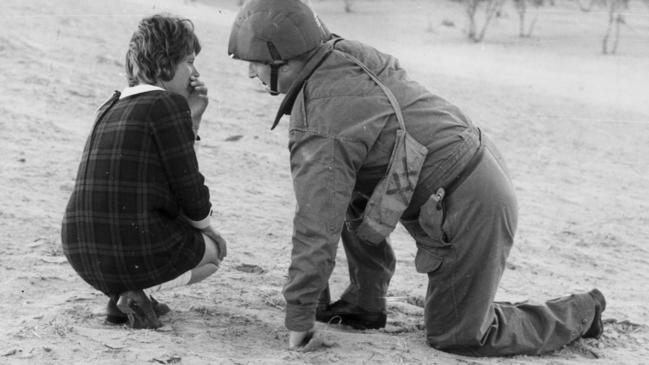
It turns out that Adelaide journalists had chartered a light aircraft to head north and a spare seat was taken by Detective Sergeant Bob Giles, who took with him sufficient weaponry and armour, including a helmet, revolver and a .762 assault rifle.
Later in the day he spotted the vehicle from the aircraft and had the plane put down in Birdsville. Det Sgt Giles, with three other officers, seven journalists and two government employees, then drove back along the track.
Meanwhile, the press tracked kidnappers’ car from the air, radioing its position to the police’s car.
This allowed the officers to set up a roadblock — when the escapees arrived, shots were fired. Det Sgt Giles returned fire with six shots, saying later he specifically aimed under the car.
Two escapees fled the car, while the other began to brake. All three were quickly arrested — one of the officers emptied his revolver of bullets and ran up to one of the men, and told him, “don’t move, or you’re dead”.
Monica remembered that after what seemed like an eternity the shooting stopped and the car door opened.
It was a smiling Detective Giles, who reassured the frightened young woman that everything was okay. Ray Titus captured that moment on film as well.
Affectionately know as ``Hugger’’ to his colleagues, Det-Sgt Giles would later be hailed a hero for his part in the arrest.
``Nothing scared him and I heard that from plenty of other coppers,’’ Mr Smith said. ``He was the type of guy who would run unarmed at 20 men with rifles and try and take them down. He was so brave.’’
Monica told police later that the men hadn’t hurt her. ``I didn’t have any outward scars but there were other things they did to me,’’ she said, refusing to elaborate.
It was at police headquarters that Monica was reunited with her boyfriend and parents.
A little more than 26 hours after being snatched from her home, Monica’s ordeal was over.
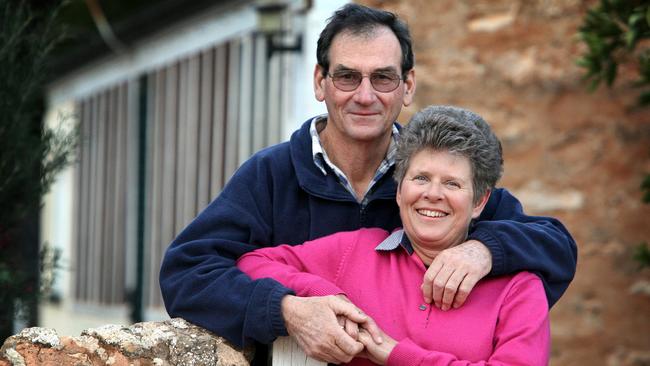
Postscript
Monica and Graham married soon after. They still live in the Riverland area.
Haley received 15 years’ jail for the escape and kidnapping but escaped again in 1972.
He then served eight years in a NSW jail before being extradited back to South Australia, where he was released on parole in 1986.
Brooks and Gunning were jailed for 12 1/2 and 11 1/2 years respectively. In 1989 Haley was shot in the back while at home, lying on his lounge. He was later charged with attempted murder over another shooting that same night in Campbelltown. The charges were replaced with manslaughter and then dropped.
Ray Titus won a Walkley Award for his photo. He continued covering news and sport for News Corp until his retirement in 2011.


Photos show chilling find at US Wieambilla accused’s house
Prosecutors fighting to allow Australian police to give evidence in the upcoming trial of Donald Day, who is linked to the Wieambilla massacre, say the cases have chilling similarities.
Shock link between UK child killer and Aussie bishop stabbing
The teen who murdered three little girls at a Taylor Swift-themed dance class in England had searched for material on the stabbing of a Sydney bishop.